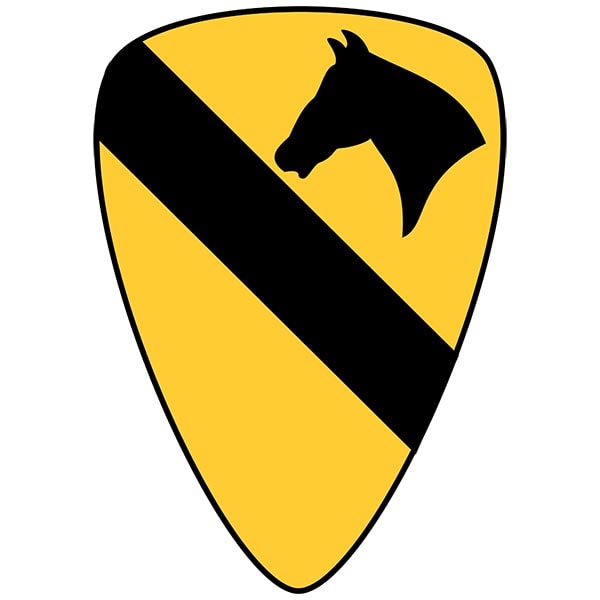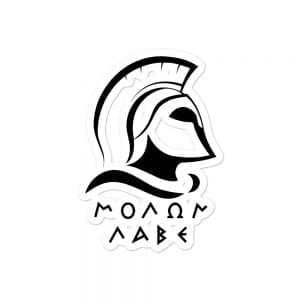On June 9, 1863, during the Gettysburg Campaign, the largest cavalry battle of the Civil War took place in Brandy Station. This one-day battle occurred in the Shenandoah Valley and involved over 20,000 soldiers, including horse artillery and infantry. The Union Army’s goal was to gather intelligence about Confederate forces while the Confederates aimed to disrupt Union cavalry operations. The battle saw fierce fighting with both sides sustaining heavy losses. Notably, the Eighth New York Cavalry Regiment played a crucial role in repelling Confederate advances, including those made by the 6th Virginia Cavalry. Today, visitors can explore the Brandy Station Battlefield and learn more about this pivotal moment in history.
The Significance of the Battle of Brandy Station as a Prelude to the Battle of Gettysburg
The Battle of Brandy Station, the largest cavalry battlefield in North America, took place on June 9th, 1863. Although overshadowed by the more famous Battle of Gettysburg that followed just weeks later, the confederate army played an important role in the prelude to this turning point in the Civil War. The horse artillery was a significant part of the confederate line during the battle.
Brandy Station: The Largest Cavalry Battle in North America
With over 20,000 troops involved and spanning across several miles, the Battle of Brandy Station was one of the most significant cavalry battles in history. The Union and Confederate forces clashed for hours on the battlefield with neither side gaining a clear advantage. The battle was a prelude to the Gettysburg Campaign, where horse artillery and infantry played crucial roles.
Confederate Overconfidence and Delayed Advance Towards Gettysburg
Although the Confederates technically won at Brandy Station, their victory came at a cost. The rebel cavalry suffered heavy casualties, especially the 6th Virginia cavalry, and their commander J.E.B Stuart became overconfident about the abilities of the southern cavalry. This false sense of confidence led to a delay in their advance towards Gettysburg while they regrouped and rested after their victory over the federal cavalry at Brandy Station.
Union’s Improved Cavalry Tactics and Intelligence Gathering
While the Confederates were resting after their “victory” at Brandy Station, Union General Alfred Pleasanton, along with Colonel McClellan, used this time to improve his cavalry tactics and intelligence gathering techniques. He had learned from his mistakes during previous battles and was determined not to repeat them again. As a result, he was able to gather valuable information about Confederate movements leading up to Gettysburg, with the help of his troopers and horse artillery.
Beginning of the Gettysburg Campaign
The Battle of Brandy Station marked the beginning of what would become known as the Gettysburg Campaign. This campaign would ultimately lead to one of the most significant battles in American history -the Battle of Gettysburg. The Union’s improved tactics and intelligence gathering at Brandy Station helped them prepare for the upcoming battle, which would prove to be a turning point in the Civil War. The Confederate line was no match for the Union’s artillery, and the Confederate cavalry struggled to keep up with their movements. Despite their efforts, the Confederate army was unable to turn the tide of the battle.Confederate cavalry struggled to keep up with their movements. Despite their efforts, the Confederate army was unable to turn the tide of the battle.
Importance of the Battle of Brandy Station as the Largest Cavalry Battle in the American Civil War
Brandy Station was the largest cavalry battle in the American Civil War.
The Battle of Brandy Station occurred on June 9th, 1863, during the Gettysburg campaign, and it was one of the most significant battles during the American Civil War. It marked a turning point in Union cavalry operations and was also known for being the largest cavalry battle ever fought during this war. The engagement took place near Brandy Station, Virginia, and involved over 20,000 troops from both sides, including brigade units with horses and artillery. The Union forces were led by Major General Alfred Pleasanton, while Confederate General J.E.B Stuart commanded his troops.
The battle began early in the morning when Union forces, including federal cavalry, launched a surprise attack on Confederate camps around Brandy Station. Despite being caught off guard, Confederate forces quickly regrouped and counterattacked with fierce resistance, supported by artillery. The fighting lasted throughout most of the day, with rebel cavalry from the 6th Virginia Cavalry joining the fray. It was not until Union reinforcements arrived that they were able to push back Confederate lines.
The battle marked a turning point in Union’s cavalry operations.
Before this battle, Union cavalry had been considered inferior to their Confederate counterparts. However, under the leadership of Colonel George McClellan and Brigadier General John Buford’s successful brigade charge at Brandy Station riding their well-trained horses, many of his tactics were developed which later showcased Union soldiers’ ability to fight effectively against Confederate horsemen. This engagement at Brandy Station proved that Union cavalry was not to be underestimated.
At the Brandy Station Battlefield, Union commanders learned valuable lessons about how to use their cavalry more effectively. They realized that they needed to focus on training and organization if they wanted their cavalry units to be able to match those of Confederates. The battle also highlighted the importance of horses, as both sides heavily relied on them for transportation and combat. Colonel McClellan was among the Union officers who witnessed firsthand the effectiveness of Confederate cavalry tactics. This newfound confidence gave them an edge in future engagements where they could successfully execute strategic maneuvers like flanking attacks or hit-and-run raids.
The Confederate cavalry proved to be a formidable opponent during the battle.
Despite losing some ground during this engagement due to the surprise attack, Confederate cavalry with their well-trained horses proved to be a formidable opponent during the Battle of Brandy Station. They were able to hold their ground and push back Union lines, which was impressive considering that they were outnumbered. Colonel McClellan, who led one of the Union corps, was surprised by the strength of the Confederate cavalry.
One reason for the success of the Confederate Army was the leadership of General J.E.B Stuart. He was an experienced commander who had trained his Confederate cavalry well and knew how to use them effectively in battle against the Federal cavalry. His tactics helped keep his rebel cavalry organized and focused, which helped them withstand Union charges.
Opposing Forces and Pleasonton’s Plan
The Battle of Brandy Station, which occurred on June 9th, 1863, was one of the most significant cavalry engagements during the American Civil War. The opposing forces were the Union’s Federal force under General Alfred Pleasonton and the Confederate’s Beverly Stuart’s force. The battle involved thousands of horses and was led by Colonel John Buford, who fought alongside General George McClellan.
Opposing Forces
The Union’s Federal force, commanded by General McClellan, consisted of approximately 13,000 soldiers, including a cavalry corps led by Colonel Hampton. Meanwhile, Stuart commanded around 9,500 Confederate soldiers and had an advantage in that he knew the terrain well. The two sides had been engaged in a series of clashes leading up to the battle at Brandy Station.
Pleasonton’s Plan
General Alfred Pleasonton planned to attack Stuart’s Confederate Army force commanded by Hampton at Fleetwood Hill to open up support for the Union’s campaign. His strategy involved dividing his forces into two columns and attacking simultaneously from different directions. The opening action of the fight was initiated by Major General John Buford’s division of cavalry.
The Combat
The combat between the two sides took place on a hill and lasted for the entire day. Both sides suffered heavy losses with a total casualty count estimated at around 1,300 men killed or wounded on each side. Guns were used extensively, causing widespread damage and destruction. It was also noted that there were many horses killed during this battle due to their heavy use in cavalry charges. General Stuart played a crucial role in leading his troops into battle.
Despite heavy cavalry fighting throughout the day, neither side was able to claim a clear victory in the battle. However, it is widely believed that it was a tactical victory for Union forces as they managed to push back Confederate troops, led by General Stuart and General Hill, from their positions near Brandy Station. The sound of guns could be heard echoing across the battlefield as the two sides clashed.
Southern Horsemen from Brigadier General William “Grumble” Jones’ Brigade
The Battle of Brandy Station on June 9th, 1863, was the largest cavalry engagement in the American Civil War. The Confederate cavalry under Brigadier General William “Grumble” Jones’ Brigade fought against Union cavalry divisions led by generals Stuart, Hill, and Gregg. The battle also saw a significant contribution from Colonel Ford’s troops.
Jones, the Brigade Commander
Brigadier General William “Grumble” Jones, alongside General J.E.B. Stuart and General A.P. Hill, led his cavalry brigade into battle at Brandy Station, where they successfully pushed back the Union cavalry corps at Beverly Ford. Jones’ leadership and tactical skills were instrumental in securing victory for the Confederate army.
The Clash of Cavalry Divisions
During the Battle of Brandy Station, two opposing forces clashed with each other: John Buford’s 1st Maine Cavalry and Federal horsemen from the 8th Illinois Cavalry versus Colonel Benjamin’s 6th Pennsylvania Cavalry and Southern horsemen from Brigadier General William “Grumble” Jones’ Brigade, including the 6th Virginia Cavalry. The battle also involved Confederate generals Stuart and Hill.
Southern Horsemen
The Southern horsemen, under the command of General J.E.B. Stuart, were an essential part of Brigadier General William “Grumble” Jones’ Brigade. They were known for their bravery and skill in battle, especially when charging up a hill or crossing a ford. During the Battle of Brandy Station, they faced off against Union cavalry divisions and held their own despite the challenging terrain.
The Importance of Cavalry
Cavalry played a crucial role in many battles during the Civil War. They were responsible for reconnaissance missions, protecting supply lines, and engaging enemy forces when necessary. At Brandy Station, both sides recognized that controlling their respective cavalry divisions, led by General Stuart, would be critical to winning the battle. The terrain was challenging with hills and fords, but the brave men of the cavalry were determined to carry out their duties.
Overcoming Southern Artillery Blocking the Direct Route to Brandy Station
The Blockade
On June 9th, 1863, Southern artillery blocked the direct route to Brandy Station, hindering the Union cavalry from reaching their destination. This was a significant obstacle for Union troops as General Stuart and General Hill led their men in Confederate attacks. The Alexandria Railroad, an important supply line for the Union Army, needed to be protected from these cavalry and infantry assaults.
Marching North
To overcome the Confederate cavalry blockade, Union troops marched north in search of a way around it. They knew that they had to find another route if they were going to continue on towards Brandy Station. The road they took led them towards Beverly Ford Road, which crossed the Rappahannock River. As they marched uphill, they encountered General Stuart and his men.
Flanking and Firing Upon the Artillery
As they marched north, Union troops, including cavalry men, encountered Confederate forces near a hill at Beverly Ford Road. The Confederates, positioned behind a stone wall with their guns pointed at the Union soldiers, were under the command of General Stuart. Rather than engaging in a direct attack, Union troops decided to flank the Confederate artillery.
The successful flanking maneuver was executed by Union cavalry, who rode up the hill undetected and attacked Confederate artillery from behind the stone wall. This tactic caught the Confederates off guard, and Union men gained an advantage over them while Stuart’s cavalry was nowhere to be seen.
Overcoming the Blockade
With their flanking maneuver successful, Union troops were able to overcome Southern artillery blocking their direct route to Brandy Station. They continued on towards their destination without further incident, despite encountering Confederate cavalry led by General Stuart and a steep hill that slowed down their men.
This victory was significant because it allowed Union forces, led by General Hill, to maintain control over an important supply line during a critical time in the war. It also demonstrated that strategic thinking and tactical maneuvers, including the use of cavalry led by General Stuart, could overcome seemingly insurmountable obstacles with the bravery and determination of the men.
Claiming Victory: The Tactical Outcome of the Battle of Brandy Station
Confederate Victory
The Battle of Brandy Station, fought on June 9th, 1863, was a significant cavalry battle in the American Civil War. It resulted in a Confederate victory due to their successful surprise attack on the Union camp led by General Stuart. The Confederates, under the leadership of General Hill, were able to launch a raid on the Union’s headquarters and disrupt their advance towards Richmond. This victory was crucial for the Confederacy as it allowed them to gain momentum and morale in the cavalry warfare.
High Casualties for Union Soldiers
The battle resulted in high casualties for the Union soldiers, with over 900 men killed or wounded, including cavalry. This was a significant blow to their forces, both physically and emotionally. The loss of so many soldiers, including cavalry and Stuart, would have had an impact on their ability to continue fighting effectively.
Forced Union Headquarters to End Their Advance Towards Richmond
The surprise attack by the Confederates, led by cavalry commander Stuart, forced the Union headquarters and their men to end their advance towards Richmond. This tactical outcome was essential as it prevented further losses for the Union army and gave them time to regroup and re-strategize.
Resulted in Significant Changes in Tactics
The Battle of Brandy Station, led by cavalry commander Stuart, resulted in significant changes in tactics for both sides. The Confederacy realized that they could use surprise attacks more effectively against larger forces, while the Union learned that they needed better intelligence gathering and reconnaissance before engaging enemy men.
Church as a Key Battlefield Location
One key location during this battle was St. James Church, which served as a strategic point for both sides. It changed hands several times during the course of the battle and provided cover for men on both sides, including cavalry troops led by Stuart.
The Significance of the June 9th 1863 Battle of Brandy Station
The Battle of Brandy Station on June 9th, 1863 was a critical event in the American Civil War. It served as a prelude to the Battle of Gettysburg and was the largest cavalry battle during the war. The opposing forces were led by Pleasonton’s plan, and southern horsemen from Brigadier General William “Grumble” Jones’ Brigade played a significant role in the battle. Confederate General J.E.B. Stuart also played a crucial part in the conflict.
Despite facing challenges such as Southern artillery blocking direct routes to Brandy Station, Union cavalry forces, led by General Stuart, claimed victory in this battle. This tactical outcome paved the way for future Union successes in battles against Confederate forces.
In conclusion, the Battle of Brandy Station was an essential moment in American history, particularly for cavalry tactics and the leadership of General Stuart. It demonstrated that Union troops, despite being outnumbered, could overcome significant obstacles and achieve victory. As we continue to learn about our nation’s past, it is crucial to remember events like this one that helped shape our country into what it is today.
FAQs
Q: How did the Battle of Brandy Station impact future battles?
The Union’s victory at Brandy Station, where they defeated Confederate cavalry led by General Stuart, boosted morale among their troops and proved that they could overcome significant obstacles even when outnumbered. This success paved the way for future victories against Confederate forces.
Q: Why was this battle important?
The Battle of Brandy Station was significant because it was the largest cavalry battle during the American Civil War and served as a prelude to the Battle of Gettysburg, with General Stuart leading Confederate forces.
Q: Who were some key figures involved in this battle?
Union cavalry forces were led by General Alfred Pleasonton, while Confederate cavalry forces were led by General J.E.B Stuart. Southern horsemen from Brigadier General William “Grumble” Jones’ Brigade also played a crucial role in the cavalry battles.
Q: What was the tactical outcome of this battle?
Despite facing challenges such as Southern artillery blocking direct routes to Brandy Station, Union cavalry forces claimed victory in this battle.
Q: How did the Battle of Brandy Station impact the Civil War overall?
The Battle of Brandy Station demonstrated that Union cavalry troops could overcome significant obstacles and achieve victory even when outnumbered. This success paved the way for future Union cavalry victories and ultimately helped lead to the end of the Civil War.



